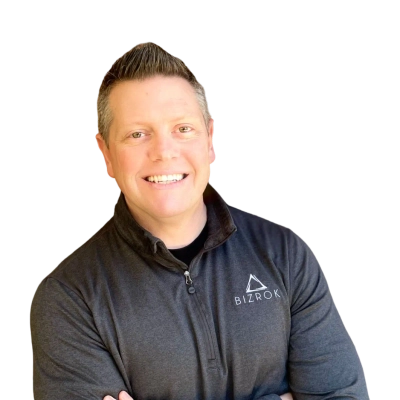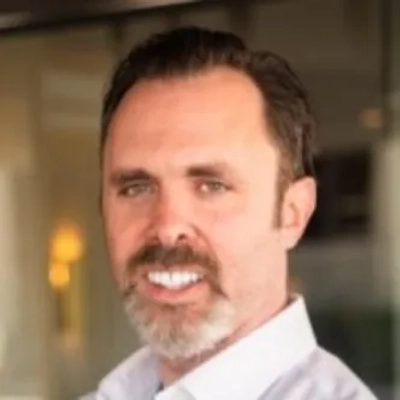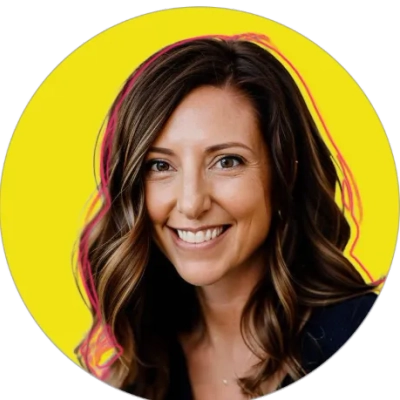9 Unexpected Challenges of Running An Optometry Practice (and How to Overcome Them)
Running an optometry practice comes with a unique set of challenges that many practitioners may not anticipate. This article delves into the unexpected hurdles faced by optometrists in managing their practices, from financial intricacies to operational complexities. Drawing on insights from industry experts, it offers practical strategies to overcome these obstacles and build a thriving optometry business.
- Invest in Quality Care Despite Perception Challenges
- Optimize Tax Structure for Significant Savings
- Build Team Redundancy to Prevent Bottlenecks
- Plan for Cash Flow Gaps in Reimbursement
- Track Real Collection Rates by Insurance Provider
- Diversify Revenue Streams Beyond Insurance Dependence
- Implement Automated Marketing Systems for Patient Acquisition
- Develop Systematic Approach to Referral Relationship Management
- Create Systems to Reduce Owner Operational Dependency
Invest in Quality Care Despite Perception Challenges
One thing I really wasn't prepared for is how many people assume all opticians are the same, offering the same level of care, service, and technology. I've invested in hospital-grade equipment like Optomap and OCT because I want my clients to have the very best, but so often I'll hear "Oh, my old optician had that" when in reality, they haven't. It can feel frustrating when you know the difference you're providing, yet the perception isn't there. My advice would be to believe in your vision (no pun intended) and stay true to your values. The right people will find you if you're confident in what you stand for. Over time, that authenticity, genuine care, and attention to detail shine through and naturally set you apart.
Optimize Tax Structure for Significant Savings
While I work with practices across industries including healthcare, the biggest blindspot I see hitting optometry practices is tax structure - specifically how they're organized as entities and the massive deductions they're missing.
I had a client running an optometry practice who was structured as a sole proprietorship, paying self-employment tax on every dollar. We restructured them as an S-Corp and immediately saved them $12,000 annually just on payroll taxes. But the real kicker was the equipment depreciation and continuing education expenses they weren't maximizing.
Most optometry practices don't realize their continuing education conferences are 100% deductible - including travel, meals, and lodging. One client was spending $8,000 yearly on optometry conferences but only writing off the registration fees. We captured the full deduction and saved them an additional $2,400 in taxes.
My recommendation: get your entity structure right first, then audit every business expense you're already making. The average practice I work with saves $4,000-$8,000 yearly just by properly categorizing existing expenses they were treating as personal costs.

Build Team Redundancy to Prevent Bottlenecks
I've scaled dozens of practices, and the biggest blindside is always team scalability - specifically, how quickly key employees become bottlenecks without you realizing it. Most practice owners focus on patient flow and equipment, but your best front desk person or technician quietly becomes irreplaceable until they're out sick for a week and everything falls apart.
I had a client whose practice was cruising at $2M annually, but their lead coordinator handled everything from scheduling to insurance verification. When she went on maternity leave, patient flow dropped 30% because no one else knew the systems. We spent six months cross-training and documenting processes that should have been standardized from day one.
My recommendation is brutal: every 90 days, pick your most "essential" team member and force someone else to cover their role for a full week. If your practice can't function without any single person, you don't have a business - you have expensive job dependencies waiting to explode.
The real cost isn't just lost revenue during coverage gaps - it's the premium you pay to keep irreplaceable employees happy, plus the operational chaos when they inevitably leave. Build redundancy before you need it, not after your practice is hemorrhaging patients.

Plan for Cash Flow Gaps in Reimbursement
I've helped dozens of optometry practices with their business plans, and the one thing that consistently catches doctors off guard is the working capital crunch during insurance reimbursement cycles. Most optometrists focus on patient care and assume steady revenue equals steady cash flow - but insurance companies can take 60-90 days to pay, while you're covering payroll, rent, and inventory costs every month.
I worked with a practice in New Jersey that was technically profitable but nearly went under because they had $180K in outstanding insurance claims while facing a $45K monthly overhead. They assumed their 30% profit margins meant smooth sailing, but cash flow timing almost killed them. We had to model out their reimbursement cycles and set up a credit line just to bridge those gaps.
The solution isn't just having a bigger bank account - you need to model your cash conversion cycle from day one. Track your average days to collect by insurance type, factor in claim rejections (which can add another 30-45 days), and maintain working capital equal to at least 3-4 months of operating expenses. Most practices I see budget for equipment and marketing but completely ignore the cash flow timing mismatch.
This isn't unique to optometry - it hits any business that relies heavily on insurance reimbursements. But vision care has the added complexity of frame inventory costs and the seasonal nature of vision benefits, making cash flow planning absolutely critical for survival.

Track Real Collection Rates by Insurance Provider
While I haven't run an optometry practice specifically, I've handled the books for multiple health services businesses over my 15+ years in corporate accounting. The biggest shock is always how broken their revenue recognition becomes with insurance reimbursements.
Most optometry practices believe they're profitable based on their appointment schedule, but then insurance companies deny 15-30% of claims months later for "coding errors" or "insufficient documentation." I had one health services client who thought they had $180K in revenue for Q3, but after insurance adjustments and denials, their actual collections were only $127K.
The killer is that most practices don't track their real collection rates by insurance type. They'll see 200 patients at $150 each and think they made $30K that month, not realizing their effective rate with certain insurers is actually $89 per patient after denials and adjustments.
My recommendation is brutal but necessary: track your collection rate by insurance provider monthly, not just your gross charges. Set up a separate account in QuickBooks for "Insurance Adjustments" and treat it like a cost of goods sold line item, because that's exactly what it is.

Diversify Revenue Streams Beyond Insurance Dependence
I think there's a mix-up in the question - I run a physical therapy practice, not optometry, but the business challenges are surprisingly similar across healthcare practices.
The biggest blindspot that nearly derailed my practice was underestimating the true cost of providing individualized, hands-on care while fighting insurance reimbursement cuts. When I founded Evolve Physical Therapy in 2010, I was determined to offer one-on-one treatment instead of the typical "churn and burn" model where therapists see 3-4 patients simultaneously.
What I wasn't prepared for was how insurance companies would systematically reduce reimbursements while expecting the same volume-based metrics. My operational costs per patient were 40% higher than typical clinics because I refused to compromise on treatment quality, but insurance payments kept shrinking year over year.
My solution was developing hybrid revenue streams that weren't insurance-dependent. We added specialized programs like Rock Steady Boxing for Parkinson's patients, ergonomic workplace assessments for local businesses, and cash-based services for complex conditions like Ehlers-Danlos Syndrome that require extended treatment time. This diversification now accounts for 35% of our revenue and gives us stability when insurance companies play games with reimbursements.
Implement Automated Marketing Systems for Patient Acquisition
I work with numerous small medical practices through WySMart.ai, and the biggest shock for optometry owners is always the marketing black hole. Most doctors think "build it and they will come" but then watch competitors with inferior service steal patients because they are invisible online.
One optometrist I worked with was losing 40% of potential patients who found his website but never booked because his online presence was essentially a digital ghost town. No reviews, outdated website, zero follow-up system. He was clinically excellent but marketing-wise, completely unprepared.
The solution that saved his practice was implementing automated review requests and anonymous visitor tracking. Within 90 days, his Google reviews increased from 8 to 127, and we started capturing contact information from 60% of website visitors who previously just vanished. His appointment bookings increased by 76%.
My advice: Start treating patient acquisition like a system, not an accident. Set up automated follow-ups for every patient interaction, make review requests part of your checkout process, and track every visitor to your website. Most optometry practices lose potential patients at every digital touchpoint because they focus purely on clinical excellence while ignoring the marketing fundamentals that actually fill the appointment book.

Develop Systematic Approach to Referral Relationship Management
Having helped launch my husband's medical practice from zero to $239K in 90 days, the biggest surprise was how much time gets consumed by referral relationship management that nobody talks about in business school.
We had 263 referring physicians by year one, but maintaining those relationships became a full-time job nobody planned for. Each referring doctor expects personalized updates on their patients, prefers different communication methods, and has their own referral quirks. One orthopedist wanted same-day callback reports, another preferred weekly email summaries, and a third only trusted face-to-face updates.
The solution was creating referral relationship systems early, not after you're drowning. We built standardized but personalized communication templates and scheduled monthly touchpoints before we even opened our doors. This prevented the chaos of trying to manage hundreds of professional relationships reactively.
My recommendation: hire someone specifically for referral coordination within your first six months, even part-time. Most practices try to handle this administratively or dump it on the doctor, but it's actually a specialized relationship management role that directly impacts your revenue stream.

Create Systems to Reduce Owner Operational Dependency
I don't run an optometry practice, but I've worked with dozens of service businesses through Scale Lite, and there's one thing that blindsides every owner: the operational dependency trap. You think you're building a business, but you're actually building yourself a really expensive job.
I had a client at Valley Janitorial who was working 50-60 hours a week because everything ran through him - scheduling, customer complaints, payroll, you name it. The real kicker? He couldn't take a vacation without the business falling apart, and any potential buyer would see that as a massive red flag.
The solution isn't hiring more people - it's building systems that work without you. We automated his scheduling, invoicing, and customer communications, plus created documented processes for everything. Within six months, his time commitment dropped to 10-15 hours weekly and his business valuation jumped 30%.
My advice: audit how many critical processes require YOU specifically to complete them. If it's more than 20%, you're not running a business - you're just self-employed with extra steps. Fix that first, because growth without systems just creates a bigger prison.



